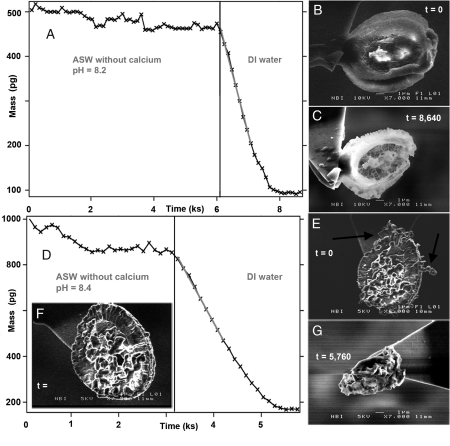Fig. 3.
Dissolving coccoliths. (A) Mass loss from one cultured coccolith exposed to Ca-free ASW (Ωcalcite estimated in each solution aliquot at the end of the dissolution period, i.e., representing each data point, < 10-8) and then to pure water (estimated Ωcalcite in each aliquot < 10-12); (B) a coccolith from C. pelagicus imaged at t = 6,000 s; (C) after complete dissolution, an organic relic beautifully reflects coccolith structure and morphology; (D) mass loss from a 60 million year old coccolith (Arkhangelskiella sp. cf. cymibiformis); (E) initial SEM image, then exposure to Ca-free ASW, pH 8.4 (t > 1,500 s) removed loose particles (arrows), presumed to be nonbiogenic calcite, but the coccolith remained; (F) the same coccolith after 3,200 s, just before exposure to pure water; and (G) complete dissolution left an unstructured relic.

